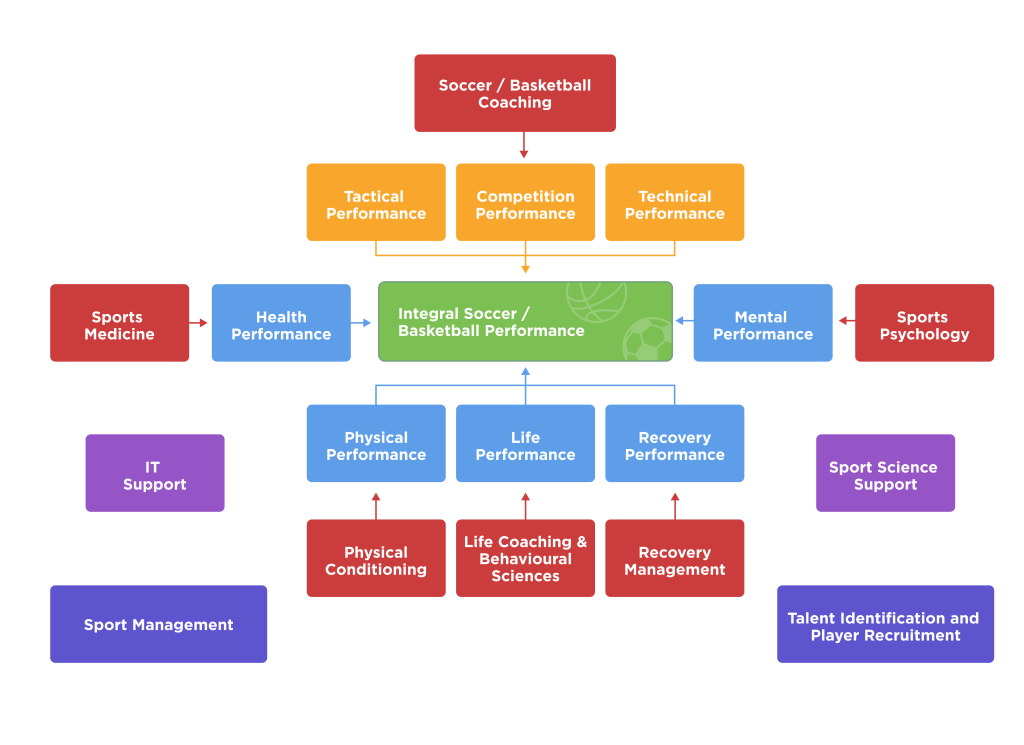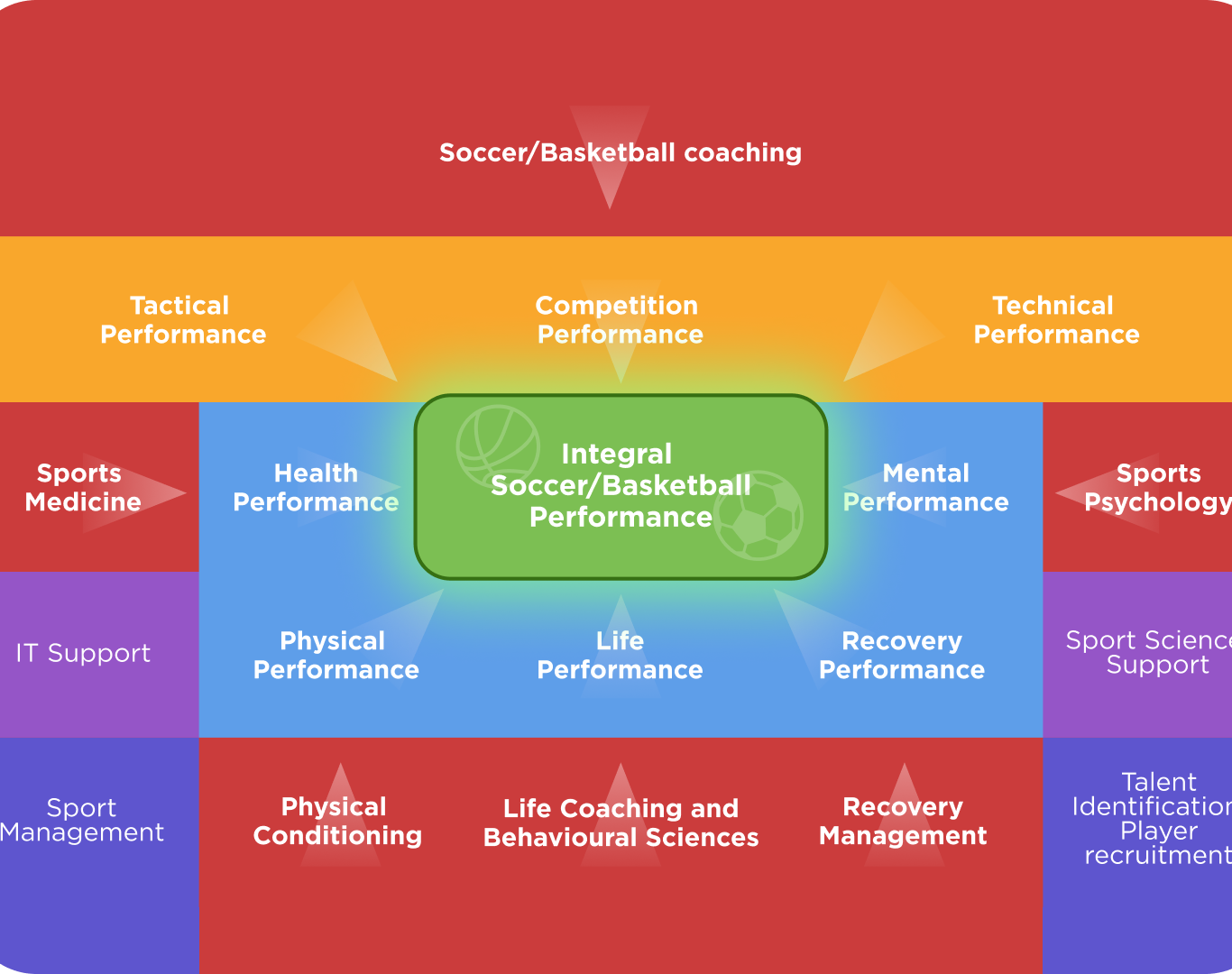Understanding the Multifaced Nature of Performance Enhancement
In the dynamic world of team sports, achieving peak performance is a multifaceted endeavor that requires precise planning, precise execution, and effective collaboration among various stakeholders (Bompa & Haff, 2009). Sports entities, such as football clubs, face a myriad of challenges in managing player performance, optimizing training strategies, and fostering communication among coaching staff, analysts, and sports scientists (Calleja-González, 2017).
These challenges are further compounded by the ever-evolving nature of sports science and the increasing demands of modern-day competition (French, 2016). In this context, the case study of Women Team Dinamo Zagreb (WTDZ) serves as an illustrative example of the complexities inherent in team sports management and the transformative potential of innovative solutions.
Integrating Advanced Technology
Like many other sports organizations, WTDZ encountered hurdles in effectively managing player performance and maximizing training efficiency. These challenges necessitated a comprehensive approach that addressed the diverse needs of the club while fostering synergy among different departments. Drawing from the framework outlined in the 360° Personal Jacket Performance System (Jukić, 2021), WTDZ sought to streamline its operations and optimize player performance through a holistic and personalized approach.
This involved integrating advanced technology, such as Ultrax, into the club’s operations to enhance performance monitoring, training program optimization, and communication among key stakeholders (Bompa & Haff, 2009). By delving into the intricacies of Dinamo Zagreb’s journey, this case study aims to shed light on the practical implications of adopting innovative solutions in the realm of team sports management (Calleja-González, 2017).
Navigating the Path Forward
Through a systematic examination of the challenges faced by the club and the transformative impact of ULTRAX implementation, valuable insights can be gleaned regarding the potential benefits of leveraging technology to drive performance excellence in sports organizations (French, 2016). This introduction sets the stage for a deeper exploration of Dinamo Zagreb’s experience with Ultrax and its implications for the broader landscape of team sports management (Jukić et al., 2021). Navigating player performance complexities, training optimization, and communication dynamics, this case study offers actionable insights for enhancing team sports performance.
While the articles provided offer valuable insights into various aspects of sports performance and preparation, they do not specifically address the integration of technology to address the challenges faced by sports entities like WTDZ. In team sports, a crucial challenge lies in coordinating diverse departments and stakeholders to achieve synergy, often resulting in a lack of coordination. Effective communication and collaboration among coaching staff, analysts, sports scientists, medical personnel, and players are essential in team sports organizations to optimize performance. However, traditional methods of data collection, analysis, and communication may be fragmented and inefficient, leading to suboptimal outcomes.

The Evolution of Women’s Football at Dinamo Zagreb
Founded in Zagreb on June 24, 2016, the Women’s Football Club Dinamo Zagreb has rapidly evolved over the past eight years, now boasting four main categories of players. With a senior team competing in the SuperSport First Croatian Women’s Football League (1. HNLŽ) and the Croatian Women’s Football Cup, alongside its participation in the SuperSport First Croatian Women’s Futsal League (1. HMNLŽ) under the name ŽMNK Dinamo Zagreb, the club’s cadet and pioneer teams also excel in the First Croatian Women’s Football Leagues for Cadets and Pioneers (Prva HNLŽ – Cadets and Prva HNLŽ – Pioneers, respectively). Moreover, the club’s youngest players, the limačice, compete in the ZNS – Women’s League – Limačice. Among the primary objectives and tasks of Women’s Team Dinamo Zagreb are development, popularization, success, and promotion of women’s football. The club actively welcomes and enrolls girls aged six and above, continually nurturing talent and fostering growth within the sport.
The Need for Comprehensive Performance Management and Integration of Ultrax
To effectively manage the diverse needs and requirements of players across various categories, the implementation of a comprehensive performance system becomes imperative. The 360 model, as outlined by Jukic et al. (2021), offers a holistic approach to sports preparation, addressing crucial aspects such as individual player profiles, recovery protocols, mindset development, lifestyle interventions, and skill acquisition strategies.
However, despite the effectiveness of the 360 model, there remains a need for technological integration to enhance its implementation further. Ultrax emerges as a revolutionary solution to bridge this gap. Developed as an advanced business intelligence sport science platform, Ultrax offers a myriad of functionalities. It’s designed to optimize player performance and streamline communication among coaching staff, analysts, and sports scientists.
Ultrax Features and Alignment with the 360 Model
Through its diverse features, ULTRAX facilitates monitoring of player metrics, comprehensive data analysis, and personalized intervention strategies. Ultrax’s capabilities align seamlessly with the principles of the 360 model, offering tailored solutions to address the unique requirements of Women’s Team Dinamo Zagreb.
By harnessing the power of Ultrax, the club can enhance training strategies, optimize recovery protocols, and foster effective communication channels among its multidisciplinary team of experts.
At the heart of the Ultrax platform lies its administrative area, where users have the ability to create and manage various aspects of the organization. From players and staff members to teams, locations, test protocols, membership plans, events, testing results, and training sessions, the platform offers comprehensive tools to facilitate seamless organization.
Once the organization is established within the Ultrax platform, the next crucial step is planning the training structure. Utilizing the event module, strength and conditioning coaches can design detailed training programs tailored to the specific needs of their teams. Drawing from common practices in periodization, coaches typically initiate the planning process for the upcoming week or two, often commencing after the conclusion of the last game of the week or on Sundays.

Utilizing the Ultrax Event Module for Training Management
In the event module, coaches in Women’s Team Dinamo create training programs, input game schedules, medical exams, recovery protocols, individual routines, and testing procedures. This allows all staff members and players to be familiar with the schedule. In this way, players can plan their days, nutrition strategies, preparation activities before training sessions, and recovery protocols after the session.
When creating an event, coaches can add notes and media for the whole squad or individual players, which are important for that particular day. This data can then be used for further analysis and filtering if necessary. The communication channel within the system goes beyond the traditional chat option, as it also includes a mobile app designed for coaches, parents, and players. Women’s Team Dinamo Zagreb utilizes the app for coaches and players to facilitate faster and safer communication and data transfer.
Once an event is created, players and teams receive notifications informing them of its existence. In addition to schedules and events, players can also receive messages or notifications containing inquiries about their wellness and pain status. Following a training session, they receive a message regarding the intensity of the session.
This allows the professional staff to gather information about the players’ internal subjective load and subjective well-being for the next day. Consequently, this enables them to assess how players are coping with the load and whether adjustments are needed for upcoming sessions.
Incorporating agile project management principles, such as Scrum, into the Women’s Team Dinamo Zagreb’s approach allows for dynamic adaptation and iterative improvements in their performance system.

Specialized Dashboards for Simplified Data Analysis
Managing data in professional sports environments can be an exhaustive task, requiring the collection, cleaning, interpretation, and visualization of various types of data, including internal load data, assessment data, heart rate data, and GPS data. In many Croatian women’s clubs, this responsibility often falls on just one physical coach or performance specialist, which can be overwhelming.
However, the ULTRAX platform simplifies this process by providing specialized dashboards for different purposes. The main dashboard serves as a versatile tool that can be customized to meet the specific needs of different organizations.
It provides a comprehensive overview of various metrics related to player performance and well-being. Within the main dashboard, we focus on several key aspects, including the general shape of the players, their sickness status, pain status, acute to chronic workload relationship, and load trend for the last three days.
By centralizing this information in one accessible interface, the main dashboard facilitates efficient monitoring and decision-making processes for coaches and performance staff.

Enhancing Performance Management with the Load Dashboard
The Load Dashboard focuses on monitoring the workload and fatigue levels of players, helping coaches make informed decisions about training and recovery strategies. Specifically, the Load Dashboard offers invaluable insights into the load status of our team and individual players throughout the week.
At the beginning of each week, we analyze the baseline data to establish the starting point and inform our training interventions. This initial assessment provides essential context for understanding subsequent changes in load parameters. Mid-week, we delve deeper into the Load Dashboard to evaluate player reactions and confirm whether our training strategies are yielding the desired outcomes. This allows us to make timely adjustments if necessary, ensuring that we stay on course toward our performance goals. Finally, as we approach the end of the week and prepare for upcoming matches, we consult the dashboard once again to assess the players’ readiness and make any final adjustments.
Within the Internal Load section of the Load Dashboard, we focus on key data points such as acute load, chronic load, daily load, monotony, strain, week-to-week changes, acute-to-chronic workload relationships, and shape. This comprehensive analysis provides us with a nuanced understanding of the players’ physical and psychological states, allowing us to tailor our interventions accordingly and optimize their performance outcomes.
Leveraging Technology for Performance Insights
In addition to monitoring internal load data, we leverage the Catapult GPS system with our first team to gain insights into our performance metrics during training sessions and matches. Within the Load Dashboard, we analyze these variables over longer time periods, enabling us to identify trends and patterns in our players’ workload. By examining weekly, monthly, and yearly values, we can gain a comprehensive understanding of their training volumes and intensities.
Furthermore, we calculate metrics such as the Acute:Chronic Workload Ratio (ACWR), monotony, and week-to-week changes for each variable. These calculations provide us with valuable insights into the relationship between training loads and player responses. Research, such as that by Gabbett (2016), has shown that rapid increases in training loads can increase the risk of injuries and impact player reactions. Therefore, by closely monitoring these variables and trends, we can plan our training sessions strategically, ensuring that they are both challenging and safe for our players. This approach allows us to optimize performance outcomes while minimizing the risk of injury.


Utilizing Advanced Performance Metrics with the Performance Dashboard
The Performance Dashboard provides insights into individual and team performance metrics, facilitating targeted interventions and improvements. Within this dashboard, we meticulously analyze every event that occurs during our team’s activities, utilizing GPS data integrated into our system to closely examine various performance metrics.
For clubs equipped with heart rate monitors, we have the capability to track heart rate data, including variables such as time spent in each heart rate zone, RR intervals, heart rate variability, TRIMPs, TRIMP per minute, and more.
One crucial aspect to highlight is the flexibility and customization options within the system. We have the ability to create our own variables tailored specifically to our needs. This level of customization is particularly significant when working with female athletes, as traditional metrics and thresholds may not accurately reflect their performance characteristics.
In addition to presenting data in tables, the Performance module allows us to delve deeper into each period or segment of the session. We can compare the demands of each week with those of the game, track every high-intensity activity, and identify the primary actions that contribute to overall performance.

Significance of Dashboards in Performance Assessment
While the system’s complexity prevents detailed explanation of each dashboard, we can highlight their significance in telling the story of player performance. For instance, the Main Dashboard serves as a centralized hub of information, seamlessly integrating internal and external subjective and objective data.
As Martin Buchheit noted, coaches must make numerous decisions daily, and the wellness and pain data provided by ULTRAX serve as invaluable tools for efficient decision-making. Beyond practical applications, these insights also serve educational purposes, enhancing players’ understanding of their bodies and optimizing their training experience.

Personalized Performance Assessment with the Player Report Dashboard
Physically, players vary in attributes such as strength, speed, agility, endurance, and flexibility. The 360° system employs various testing protocols and performance metrics to assess these physical qualities accurately.
Within the Ultrax platform, the Player Report Dashboard serves as a comprehensive tool for tracking and analyzing every aspect of a player’s profile. Coaches and sports scientists can access historical data on internal load, including metrics such as session duration, session rate of perceived exertion (sRPE), heart rate variability (HRV), and subjective wellness scores and sport related variables.
Furthermore, the Player Report Dashboard integrates performance data from training sessions and games, allowing coaches to monitor key performance indicators such as sprint times, distance covered, acceleration, deceleration, and technical proficiency. By analyzing these metrics in conjunction with internal load data, coaches can assess the effectiveness of training interventions and identify areas for improvement in individual player performance.
Additionally, the dashboard includes a repository for all collected notes and media related to each player, providing a comprehensive overview of their strengths, weaknesses, and development areas (notational and sport analysis). Key performance goals and objectives are also documented within the system, ensuring that all staff members are aligned and informed about the specific targets for each player.
Implementation of Readiness Protocols
In the Diagnostics module, the Ultrax platform facilitates the implementation of weekly readiness protocols to assess player readiness and physical preparedness for training and competition. These protocols typically include standardized tests such as the 5-second adductor squeeze test, countermovement jump, and maximal acceleration and deceleration assessments.
By conducting these tests regularly, we can monitor changes in player athleticism, identify areas for improvement, and adjust training programs accordingly. Furthermore, the Diagnostics module enables the tracking of assessment data across various dimensions of athletic performance, including strength, morphology, endurance, speed, change of direction, agility, and power.
By establishing total scores in the way of total score of athleticism (Turner et al., 2019), z-scores, and categorical values for each athlete, the system provides valuable insights into individual player profiles and progress over time.

Training and Drill Builder
The Training Builder module empowers coaches to create comprehensive training sessions or individual components with precision and flexibility. Coaches can integrate various training goals, including strength development, plyometrics, ballistics, endurance, sport-specific skills, speed, and agility, ensuring alignment with team objectives and individual player needs.
Within each category, coaches can specify variables such as sets, reps, rest intervals, intensity levels, distances, angles, and exercise selection. This level of customization ensures that the training program is tailored to optimize player development.
Once designed, coaches can save and organize the protocols for future use, streamlining the planning process and ensuring consistency in training methods.

In addition to the Training Builder, the ULTRAX platform includes the Drill Builder module, enabling coaches to design sport-specific drills and exercises seamlessly integrated into training sessions.
Coaches can draw exercises directly within the platform, incorporating elements such as tactical formations, movement patterns, and game scenarios.
Moreover, coaches can connect these sport-specific exercises with data from GPS tracking, internal load monitoring, and strength and conditioning parameters, providing a holistic view of player development and performance.


Smart Assistant: Tailored Insights for Performance Optimization
The Smart Assistant feature within the Ultrax platform serves as an invaluable tool for Women’s Team Dinamo Zagreb, providing timely insights and recommendations based on player data and trends over time.
This intelligent component of the system continuously monitors various aspects of player performance and well-being, including sleep duration and quality, physical shape status, and load parameters. By analyzing longitudinal data, the Smart Assistant can identify patterns and deviations from established norms, alerting coaches to potential issues or areas for improvement.
For instance, if a player consistently experiences insufficient sleep duration over a period of time, with less than seven hours of sleep per night for five consecutive days, the Smart Assistant will flag this as a concern. Coaches can then intervene by providing targeted support and guidance to help the player improve their sleep habits and optimize recovery. Similarly, if a player’s performance metrics, such as maximum speed values, have not been reached for an extended period, the Smart Assistant will highlight this and recommend a high-velocity session.
Female-Specific Features
In addition to the comprehensive performance monitoring and management capabilities offered by Ultrax, the system includes female-specific solutions tailored to the unique physiological and hormonal needs of female athletes.
One notable feature is its ability to track menstrual cycle phases and periods for female athletes. Research has shown that the menstrual cycle can significantly impact various aspects of athletic performance and well-being in women. Therefore, understanding and accounting for these fluctuations is essential for optimizing training and performance outcomes in female athletes.
By incorporating menstrual cycle information into training planning, coaches and performance staff can mitigate the potential negative effects of hormonal fluctuations on performance and well-being. Moreover, the system can provide insights and recommendations regarding recovery strategies tailored to each phase of the menstrual cycle, helping to optimize performance and minimize the risk of injury and overtraining in female athletes.

Maximizing Potential Through Comprehensive Systems
In conclusion, the integration of Ultrax technology into the performance management system at Women’s Team Dinamo Zagreb has ushered in a new era of excellence in women’s team sports. By leveraging the diverse functionalities of Ultrax, the club has been able to overcome critical challenges and enhance performance outcomes across various fronts.
From streamlined organization and communication to targeted training optimization and personalized player monitoring, Ultrax has revolutionized the approach to player development and performance enhancement at WTDZ.
Through the implementation of a comprehensive performance system rooted in the principles of the 360 model, combined with the transformative capabilities of Ultrax, WTDZ has been able to maximize the potential of its players.
As the landscape of team sports continues to evolve, WTDZ remains at the forefront of innovation, setting new standards for performance excellence and inspiring future generations of athletes and sports organizations.
References
- Bompa, T. O., & Haff, G. G. (2009). Periodization: Theory and methodology of training. Human Kinetics, Champaign, II.
- Calleja-González, J. (2017). Paradigm for recovery in team sports. Archivos de Medicina Deporte, 34(3), 126-127.
- French, D. (2016). Adaptation to anaerobic training. In G. Haff & N. T. Triplett (Eds.), Essentials of Strength Training and Conditioning (pp. 87-114). Human Kinetics, Champaign, IL.
- Jukic, I., Calleja-González, J., Cuzzolin, F., Sampaio, J., Cos, F., Milanovic, L., Krakan, I., Ostojic, S., Olmo, J., Requena, B., Njaradi, N., Sassi, R., Rovira, M., & Kocaoglu, B. (2021). The 360° Performance System in Team Sports: Is It Time to Design a “Personalized Jacket” for Team Sports Players? Sports (Basel), 9(3), 40. https://doi.org/10.3390/sports9030040
- Milanović, D. (1997). Teorija treninga. In D. Milanović (Ed.), Priručnik za sportske trenere (2nd ed., pp. 481-603). Fakultet za fizičku kulturu.
- Vermeill, A., & Helland, E. (1997). The Right Stuff. Strength and Conditioning Journal, 2(1), 25-30.
- Gabbett, T. J. (2016). The training-injury prevention paradox: Should athletes be training smarter and harder? British Journal of Sports Medicine, 50(5), 273-280. https://doi.org/10.1136/bjsports-2015-095788
- Hackney, A. C., McMurray, R. G., & Battaglini, C. L. (2019). The female athlete triad and relative energy deficiency in sport. Current Sports Medicine Reports, 18(6), 221-225.
- Lebrun, C. M. (1993). The effect of the phase of the menstrual cycle and the birth control pill on athletic performance. Clinical Sports Medicine, 12(2), 351-361.
- Oosthuyse, T., & Bosch, A. N. (2010). The effect of the menstrual cycle on exercise metabolism. Sports Medicine, 40(3), 207-227.
- Reilly, T., & Ekblom, B. (2005). The use of recovery methods post-exercise. Journal of Sports Sciences, 23(6), 619-627.
- Kyprianou, E., & Farioli, F. (Eds.). (2018). Balancing Physical & Tactical Load in Soccer: A Holistic Approach – A Practical Guide for Soccer Practitioners.






